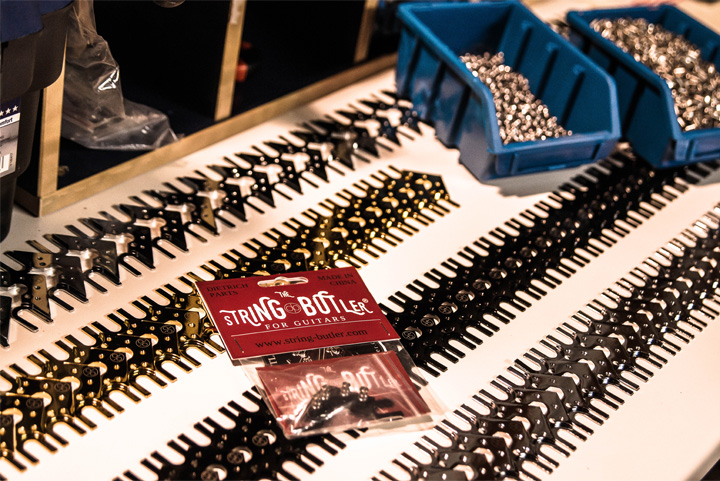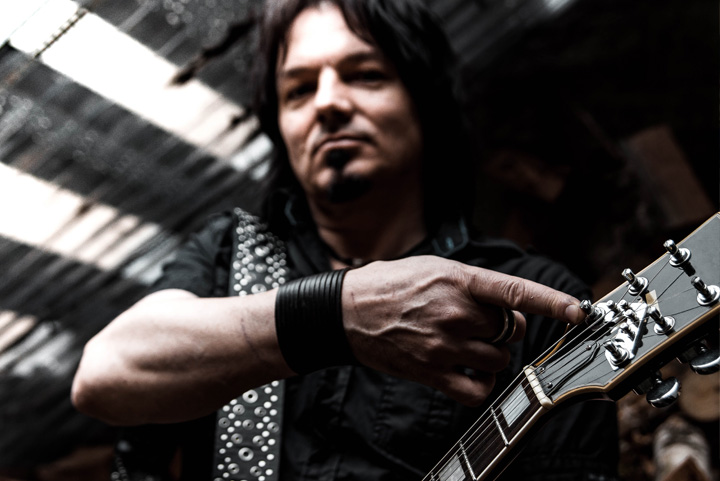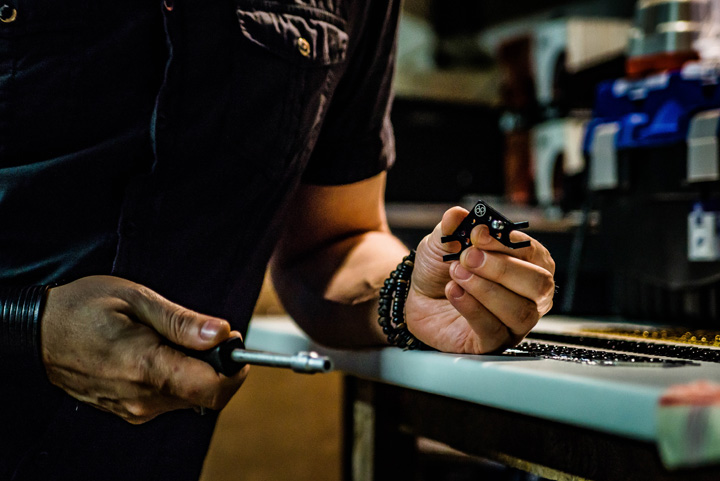Halle an der Saale is not primarily known as Germany’s rock ’n’ roll capital. It’s more associated with numerous theaters, museums, and one of the oldest universities of the country. However, Halle is a place where some true innovations came into existence.
Take for instance Sven Dietrich, who worked as a professional musician for more than 30 years, ran his own little musical instrument shop for some time, and noticed a recurring issue with some of the classic guitar designs he dealt with on a daily basis.
“Handling instruments with a classic 3L/3R headstock every day made me realize, that most of them have an issue with their tuning stability. It was also interesting to find this issue not only with budget models, but with premium instruments as well,” Dietrich says.

Dietrich started to analyze the problem and was keen to find the cause. After some intensive research, he identified the nut as the cause of all evil. Due to the string distribution behind the nut, the string material would kink and stick inside the nut. This also creates more friction as a result, making string bends and intensive playing a nightmare, especially for very active and busy musicians.
After thorough research and numerous tests with different materials and guitar designs, Dietrich presented the very first version of his String Butler and started a crowdfunding campaign on Kickstarter. This first step already gave him a reference for the upcoming success of his concept. His company Dietrich Parts was born.
What does the String Butler actually do?
The String Butler is mounted on the headstock between both tuners of the E- strings or the tuners of the A- and B-strings (depending on the guitar design) and re-distributes the strings behind the nut, making them run straight into the tuners. In addition, the strings are routed with rollers that move vertically and horizontally. This way the strings cannot get stuck and friction is reduced to a minimum. Even heavy string bending or crazy playing cannot harm the tuning stability.

“Meanwhile, I optimized the production and released the String Butler in version 2,” says Dietrich. “My little problem solver is available in V2 and V3. Both models are equipped with 4 rollers and solve the issue with the affected strings A, D, G, and B.”
Quite naturally, there are guitar players who look at the String Butler and don’t find it very appealing since it’s not very “traditional.”
“I totally understand that,” says Dietrich. “Especially if you’re lucky enough to not have those issues with your guitar. At the end of the day however, the most important thing is that it works. I received feedback from many users who won’t play on a stage or in the studio without their String Butler-equipped instrument.”
From Halle an der Saale to the world
Right after Dietrich established a streamlined production process, he started selling the String Butler directly to customers. That was also when he found Reverb.
Dietrich says, “I can definitely confirm that without Reverb, the String Butler might not be where it is at this point. Reverb built a bridge for me to access the international market and brought more awareness to my products, especially overseas. The personal support and friendly contact with the Reverb staff is something very special to me. It’s easy and fun to work like that, especially when problems occur that need a solution.”

About his plans for the future of the String Butler, he explains: "A few guitar manufacturers have different measurements for their headstock designs and therefore an even wider stretch between tuning machines. I always get feedback and requests from buyers about that, and I will soon release another version on the String Butler, which fits exactly those demands.”
You can find all current versions of the String Butler in the String Butler Reverb Shop.
